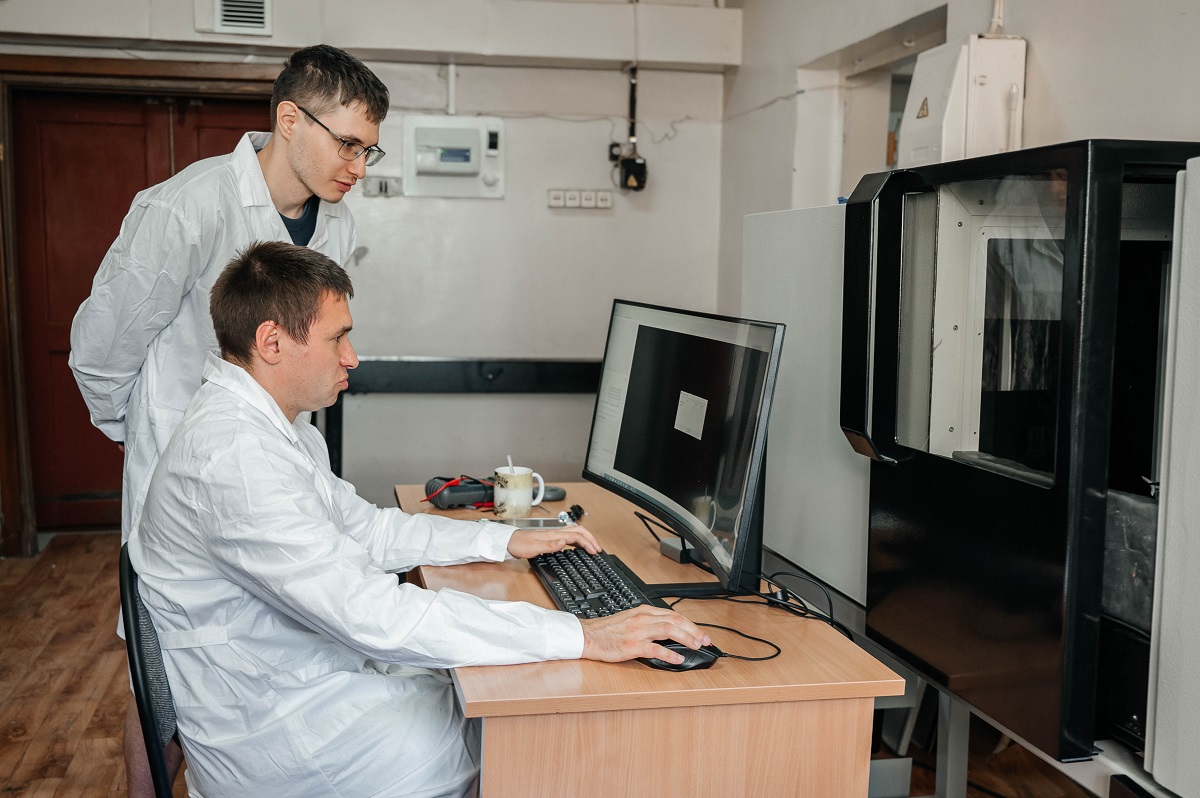Concrete consists of 70% so-called inert materials or aggregates (crushed stone and sand) and 30% of cement stone - the product of the reaction of cement, water and various additives (chemical or mineral). At the same time, the porous structure of cement stone plays a significant role in the properties of concrete. And its role, as well as its quantitative description, have not been fully studied and are of great interest.
TPU scientists perform X-ray tomographic studies of cement stone porous structure and create a three-dimensional image of the porous structure distribution in the scanned sample. This makes it possible to determine how pores of different sizes are distributed in the cement stone, what shape they have (spherical, cylindrical, etc.) and how they are connected. The task of scientists at this stage of research is to find the function of pore distribution depending on the above parameters.
"The task of determining the porous structure of rocks and cement stone has been and will continue to be relevant, because the porous structure of a material largely determines its physical and mechanical properties. For example, the so-called durability of concrete, which according to GOST is formulated in terms of frost resistance, i.e. the number of freeze-thaw cycles without significant loss of strength, is largely determined by the porous structure of cement stone. Another example of a property determined by the porous structure is the water resistance of concrete, an important parameter in the construction of bridges," says Roman Rezaev, one of the authors of the study, Associate Professor at the TPU Research School of High-Energy Physics.
Scientists have conducted a study of five different concrete compositions with different porous structures. To scan them, they use the high-resolution tomography scanner of Tomsk Polytechnic University. Their method of tomographic scan data analysis is unique because of the hybrid approach, which is a combination of methods based on neural networks and methods based on physical representations. This dramatically reduces the training sample size and significantly improves reliability.
"The idea behind the data analysis improvement method is to "help" the neural network classify each image pixel as belonging to a pore or not by further analyzing the spatial three-dimensional neighborhood of that pixel. In other words, the probability of a given pixel being classified as a "pore" depends not only on the training sample base consisting of two-dimensional images, but also on how these images are related to each other by the continuity condition of the material properties. For example, if sand particles have a smooth surface, the probability of a pore in their vicinity is much lower than if they have a fractured boundary," adds Roman Rezaev.
The methodology of the TPU research team was tested together with the Research Institute of Modern Materials and Technologies. Now the team is testing the method and improving the tomographic scan data processing algorithms. According to the scientists, in the future the neural network can be used to select the optimal mix of concrete with specified properties at the lowest cost.
